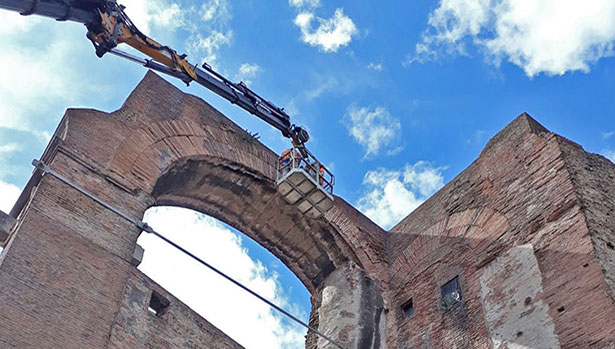What is building monitoring?
Building monitoring refers to the systematic process of observing and recording the structural integrity of buildings, skyscrapers, and heritage sites. This practice ensures safety for occupants and visitors while identifying areas requiring maintenance or repair.
Monitoring employs techniques such as visual inspections, structural and geotechnical instrumentation, and advanced data analysis tools. Effective building monitoring is crucial for the long-term preservation and sustainability of modern skyscrapers and historical landmarks.
For skyscraper monitoring, the focus is on detecting early signs of settlement, rotation, or structural stress caused by factors like underground excavations, changes in the water table, or seismic activity. Addressing these challenges promptly helps prevent significant damage and ensures the building’s stability.
Meanwhile, heritage monitoring aims to protect the cultural and architectural value of historical structures. Monitoring crack development, material degradation, and moisture levels is essential for guiding restoration and conservation efforts.
Whether for modern buildings or cherished landmarks, proactive monitoring prevents costly repairs and extends the lifespan of structures. Explore tailored solutions for building monitoring, skyscraper monitoring, and heritage monitoring to safeguard your assets with precision and reliability.

Which are the challenges in building monitoring?
Building monitoring presents a range of challenges due to the diverse factors affecting structural stability and safety. For modern structures, such as skyscrapers, skyscraper monitoring must address issues like high wind loads, seismic activity, and foundation settlement. These challenges require advanced geotechnical instrumentation and real-time data collection to detect potential risks early and ensure stability.
In the context of heritage monitoring, the preservation of historical buildings involves unique difficulties. Aging materials, environmental factors, and human activity can lead to cracks, moisture infiltration, and material degradation. Monitoring these structures requires non-invasive methods that protect their cultural value while ensuring their integrity over time.
Another challenge in building monitoring is the integration of data from various sensors and tools to provide actionable insights. Structural changes may occur gradually, making it essential to combine long-term data analysis with prompt responses to sudden shifts, such as those caused by nearby excavations or water table fluctuations.
Finally, each monitoring project must consider the structure’s unique design, location, and purpose. Tailored solutions are necessary to address these challenges, whether for modern skyscrapers or cherished heritage sites. Investing in innovative monitoring systems ensures the safety, sustainability, and longevity of all types of structures.










